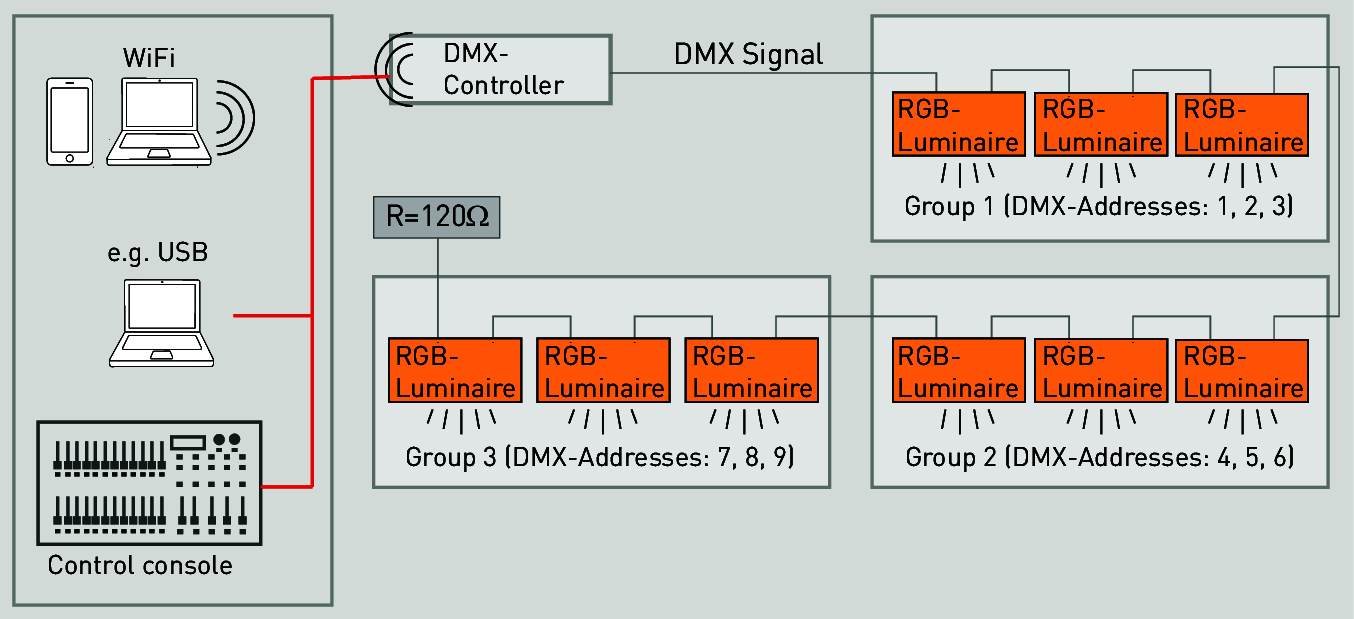
Figure 3.240: Schematic representation:
DMX control device with operating panels and operated luminaires.
Postbox 1960
D-59753 Arnsberg

Figure 3.240: Schematic representation:
DMX control device with operating panels and operated luminaires.
In stage lighting, the standard DMX 512 was created as early as the beginning of the 1990s to facilitate quick operation of multiple participants via addressed digital control signals. The DMX interface is also frequently used in architectural lighting.
The high-frequency DMX signal is transmitted through a twisted, screened two-core control line. Its reach is limited, but it can be refreshed and boosted using repeaters for transmission over any distance. The control line must be installed as a line section. Ring or star-shaped installations are not functional. At the end of the line section, a terminating resistor is required.
It is possible to connect any number of participants, using several repeaters as necessary. In a DMX system (DMX universe), 512 distinct addresses are available for assigning participants. Participants with the same address are operated jointly.
Addressing occurs at the control gear unit, frequently by means of DIP switches, but increasingly also via specific software and commissioning interfaces.
The advancement of this standard to DMX RDM also facilitates device feedback to the control. If more than 512 addresses are required, several universes separately set up at installation can be merged into one overall control system.
The high flexibility and speed of this interface as well as its large number of participants per control line are highly appreciated by users, particularly for implementing dynamic light control systems. In stage lighting, not only the luminous flux of the connected spotlights, but also their orientation and movements are controlled this way.